The summer holiday season has kicked off in earnest, with millions of tourists already heading off for some hard-earned fun in the sun.
Alongside the poolside lounging, sightseeing and souvenir shopping, thrill-seeking is increasingly on the menu for many tourists.
Buoyed by a ‘you only live once’ mentality, the potential for sharing adventures on social media – and perhaps a little Dutch courage from a cocktail or two – means we’re much more likely to seek out adrenaline hits while on holiday, say psychologists – but, as cases reported every year evidence, it’s not always safe.
Earlier this year, Kevin Morgan, a 62-year-old from Stirling in Scotland, was killed in Lopburi, Thailand, after driving a quad bike at high speed into a concrete barrier on a motorway flyover, while mother-of-four Belinda Taylor, 48, tragically lost her life skydiving at a centre in Devon this month.
Taylor, who had opted to do a 15,000ft rather than a 7,000ft dive, was killed alongside Bournemouth instructor Adam Harrison, 30, with an investigation into their deaths now underway.
Even seemingly innocuous pursuits such as funfair rides can be perilous affairs for tourists, with safety often compromised – as a Panorama investigation, which aired on BBC One last week, uncovered.
The documentary detailed fairground accidents that have left victims thrown off rides ‘like ragdolls’, with attractions involved in accidents often sold on in different countries, modified and put back into use.
And this weekend saw a third major hot air balloon accident in two weeks, after a balloon caught fire mid-air in the Praia Grande region of southern Brazil, killing eight of the 21 passengers on board.
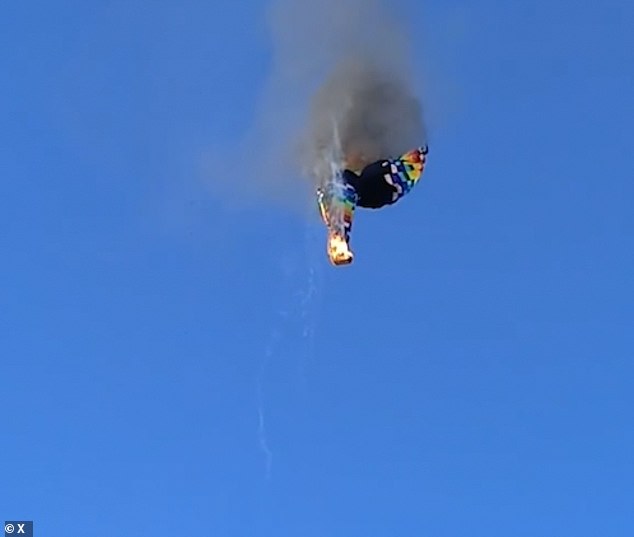
This weekend saw a horrifying crash in Brazil’s southern state of Santa Catarina, in its Praia Grande region – a well-known hot air ballooning location, with 13 of 21 passengers killed when a balloon caught fire
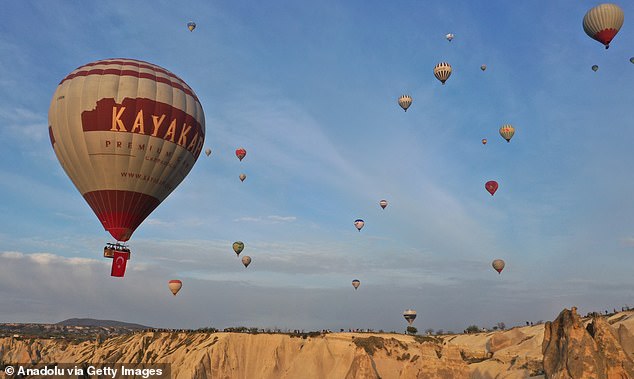
Last weekend, a pilot lost his life after a ballooning accident in the Ihlara Valley in Turkey’s Aksaray province – with another accident in the region hours later on the same day (stock photo)
Just a week earlier, 19 tourists were injured and a pilot died when a hot air balloon sightseeing tour crashed in Aksaray, in Turkey’s Ihlara Valley, after turbulent winds during landing. Hours later, 12 more tourists were injured at the same site after another crash landing.
Risk expert Rob Schumacher, co-founder at Feather, an insurance company specialising in cover for ex-pats, says that the spate of hot air balloon accidents will likely make the pursuit much safer for tourists in future.
‘If the Brazil accident, for example, was preventable then future safety checks will include whatever caused it – possibly making hot air ballooning safer. Accidents do happen, but any single accident doesn’t change the overall risk of an activity.
‘It’s still more dangerous to drive from London to Manchester than do a single hot air balloon trip with a reputable operator.
‘That being said, if accidents start to pile up then it is possible that the risk has changed for some reason – but here we have no indication that this is the case.’
So, how do insurance companies work out just how risky an activity is? Rob explains: ‘Actuaries, mathematicians who measure risk, use “micro morts” to calculate the probability of death of doing an activity.’
A micromort is a unit of risk that equals a one in a million chance of dying – one micromort is roughly equivalent to a 230-mile car ride.
‘To make it easy to understand’, he says, ‘We work it out as “how many miles would I have to drive in the UK to have an equally risky experience?”.’
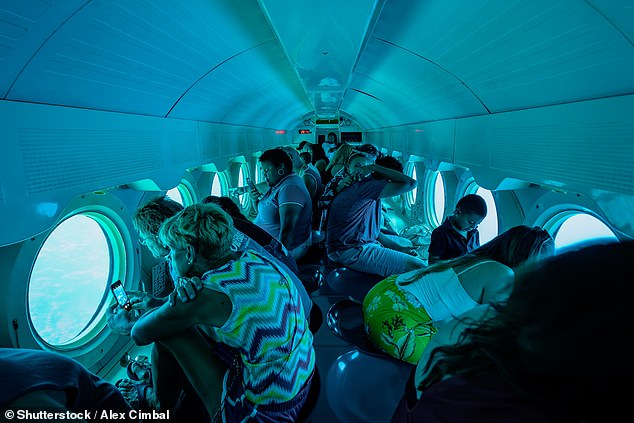
Travel psychologist Dr Charlotte Russell told MailOnline that many of us try activities that we wouldn’t ordinarily do at home because we feel more ‘carefree’ while on holiday (pictured: a tourist submersible vessel)
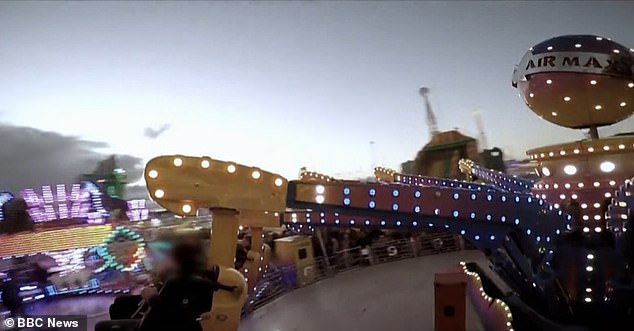
A recent Panorama programme for BBC One investigated the dubious safety that can surround funfairs, including the case of an Air Max ride that had caused the death of an eight-year-old girl in Australia in 2014- but was sold three years later to the UK and put back into use
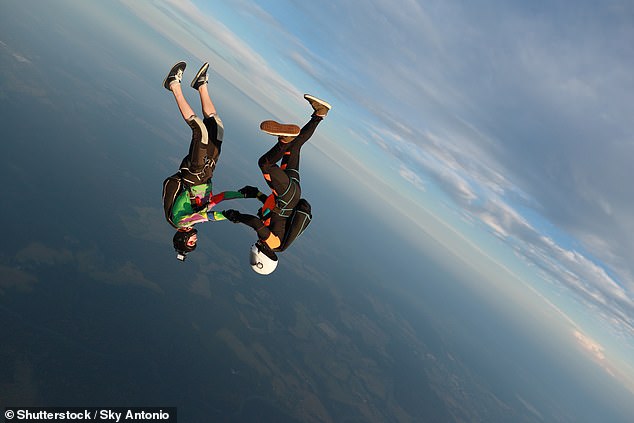
Insurers work out the risk of an activity based on the ‘micro mort’ unit, which calculates the probability of death while doing it

Rob Schumacher, co-founder at insurance company Feather, says pursuits that you might think are dangerous, such as bungee jumping, are actually really safe
While you’d have to drive for 115 miles for the risk level associated with hiking, horse riding is a much more dangerous pastime at 2,300 miles.
Simon McCulloch, chief growth officer at Staysure adds: ‘Safety regulations vary widely around the world, and while certain activities might be tightly controlled in the UK, the same cannot always be said abroad.
‘Moreover, it’s not uncommon for holidaymakers to book excursions or hire equipment through informal operators, often without checking whether they’re properly licensed or insured.
‘This can be made worse by language barriers, where key safety briefings or waiver forms are misunderstood or missed altogether.
‘These are the kinds of scenarios that can turn a spontaneous bit of fun into something far more serious, with potentially costly consequences.’
And, warns Rob Schumacher, often an on-a-whim decision to try an activity means it might not be covered, saying: ‘You can’t buy coverage after your trip has started. If you realise you need it mid-holiday, it’s probably too late – or you’re committing insurance fraud.’
Why are we much more likely to pursue adrenaline-filled activities in our leisure time than we would in ordinary life? Dr Charlotte Russell, a clinical psychologist and the founder of The Travel Psychologist, tells MailOnline: ‘I think it’s a combination of being outside of our routine, feeling carefree and wanting to make the most of the experience.
‘This is particularly pertinent if we are feeling like we might only visit the place once and by social media, where we may feel the need to do impressive and interesting activities to share.’
So, how do popular holiday activities, from jet-skiing to funfairs and paragliding, rank in terms of real risk to tourists?
Insurance expert Rob Schumacher takes us through the ones you should swerve, and pursuits that are very safe, some of which might surprise you…
CAVE DIVING
DANGER RATING: 12/10
Micro mort ranking: 23,000 miles
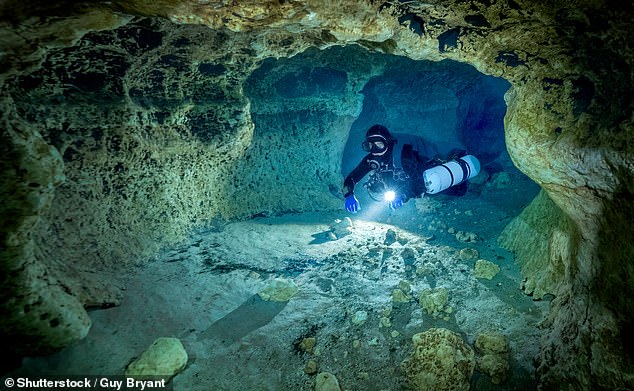
Risky doesn’t even cover it: Cave diving – exploring underwater caves with diving equipment –is considered so dangerous that life insurance providers rarely cover it
The craziest one by a mile on this list. It’s really, really dangerous…
Our risk expert doesn’t hold back on this underwater marine activity, which involves exploring water-filled caves with diving equipment.
He says: ‘You’re out of your mind, crazy if you do cave diving.
‘Even if you’re well prepared, the level of accident or serious disability or death that happen means it’s basically something you should never do.
‘We know from an insurance point of view that it’s a terrible thing to do because it’s an exclusion for almost every single life insurance policy.
‘This is one of those where almost every insurance company says we can’t cover it because it’s too risky.
‘This is the craziest one by a mile on this list. It’s really, really dangerous’.
QUAD BIKING
DANGER RATING: 8/10
Micro mort ranking: 13,800 miles
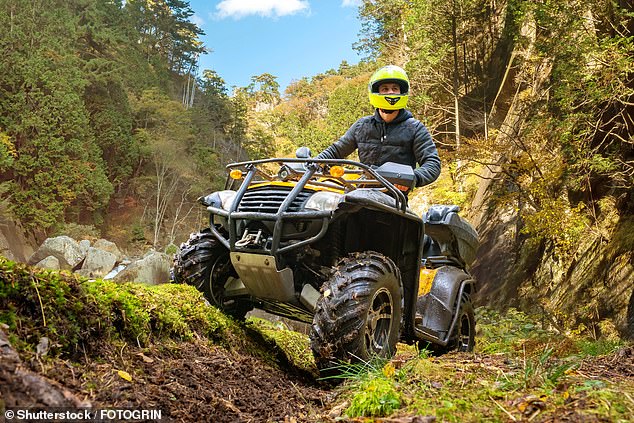
‘The human body snaps like a twig if you hit something on a quad bike,’ warns our expert…but says if handled sensibly there’s no reason tourists can’t enjoy them
Quad bike accidents frequently make the news. Tragically in 2019, financier Ben Goldsmith lost his daughter, Iris, after she was killed riding a quad bike at the family home in Somerset at the age of 15.
Last year, student nurse Maddy Morris, warned people of the dangers of riding the bikes, known as ATVs, on holiday, after she suffered a horrific fall from a cliff in Greece.
The 24-year-old was knocked unconscious when she veered off the side of a cliff and tumbled nearly 10 feet before the rental bike landed on them, knocking her out.
She said she’ll ‘never go on a quad bike again’ saying at the time: ‘I wouldn’t advise renting a quad bike to anyone. They’re deathtraps. My helmet definitely saved my life.’
Rob says: ‘While cave diving is always dangerous, quad biking massively depends on how you do it. In insurance, young men statistically are much more likely to die in accidents than young women.’
Wearing protection for your head, neck and back can reduce the risk but he offers a sober warning: ‘The human body snaps like a twig if you hit something on a quad bike.
‘It’s the same with motorbikes; in a car you’re well protected but the human body with a piece of heavy equipment? You’re at the mercy of it.’
‘[From an insurance point of view] if you’re a 25-year-old guy riding a quad bike, it’s likely to be deemed a much higher risk and you should probably avoid it.’
‘That said, if you’re just cruising around the countryside, the risk is much, much lower. If you’re sensible, it’s probably okay.
He adds: ‘The problem is that most of the time, the people who end up on quad bikes are the people who want to have a bit of a thrill – which can make it a really, really risky activity.
‘Based on the numbers, it’s not something you could ever really recommend.’
JET SKIING
DANGER RATING: 5/10
Micro mort ranking: 3,450 miles
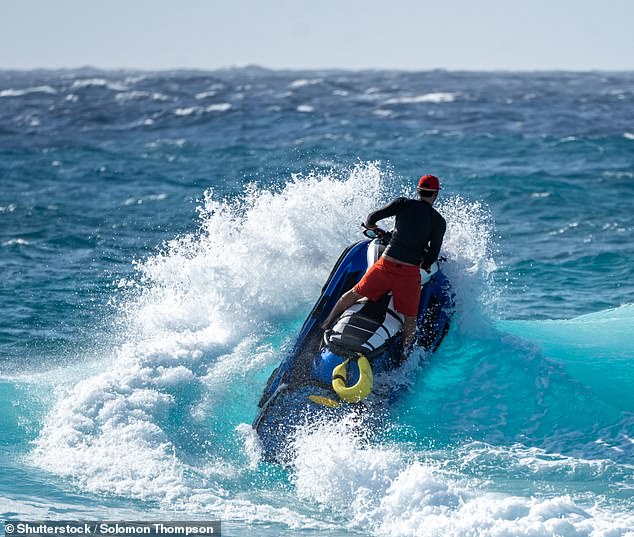
Take it steady on jet skis and the risks are greatly minimised…but seek out big thrills (and big waves) and the risk leaps
Used in a ‘safe, responsible way’ the risk of injury or worse when riding a jet ski is much lower, says Rob.
It’s the kind of holiday pursuit that encourages risky behaviour though, he warns.
‘From a safety point of view, I feel kind of comfortable with it – but don’t do crazy things with jet skis, the risks are still very high.’
PARAGLIDING
DANGER RATING: 4/10
Micro mort ranking: 3,105 miles
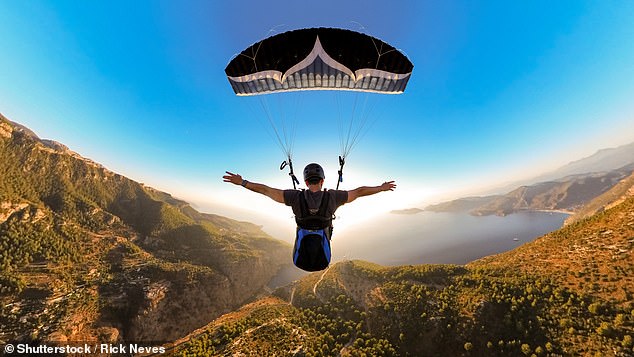
Paragliding is an aerial sport that involves jumping from a clifftop with a parachute attached
Would our insurance guru be tempted to leap off a cliff top with a parachute attached? ‘I’m afraid of heights so no, you’ll never find me paragliding.’
The risk with this extreme aerial sport is mostly around the set-up of those providing the activity, and tourists should trust their instincts, says Rob.
‘Ask yourself: does it look like they have a safety process, do all the little details feel good to you?
‘Most accidents happen when things occur that people aren’t prepared for, such as bad weather, or operators having to rush because they’re busy.
‘If it’s great weather, and everything looks in order, then do it… but don’t do it too regularly’.
HORSE RIDING
DANGER RATING: 4/10
Micro mort ranking: 2,300 miles
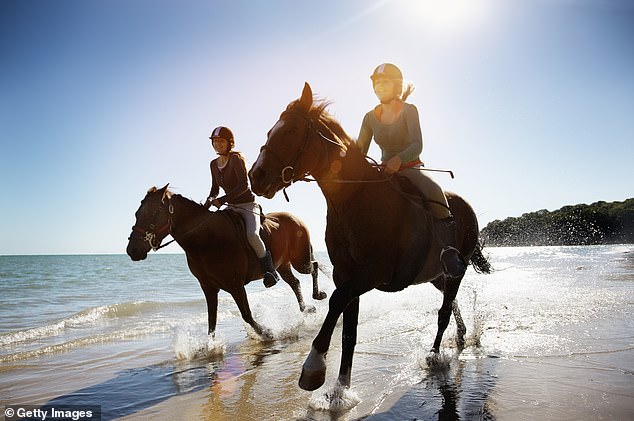
Don’t underestimate the danger of horse riding, particularly if you’re not a confident rider
Novices need not apply when it comes to holiday horse riding.
‘This one is a lot more dangerous than most people think’, says our expert.
‘Horses are big, strong animals and you can fall pretty far.
‘A lot of people do it, but there are high risks and it’s a case of “know your limits” with this one.’
SKYDIVING
DANGER RATING: 4/10
Micro mort ranking: 2,070 miles
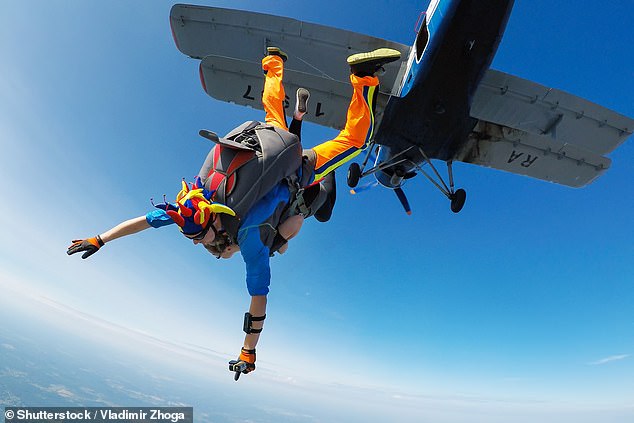
Skydiving deaths are very rare, says Rob – but if something doesn’t feel right before you leap, then trust your instincts and speak up
This is a similar risk scenario to paragliding, according to our man – where people should assess the risk themselves and not be afraid to shout if things don’t feel right.
‘Pick the right tour company/instructor, make sure all the conditions are good – it’s much better to not do the dive than to do something that feels off’.
WHITE WATER RAFTING
DANGER RATING: 2/10
Micro mort ranking: 1,725 miles
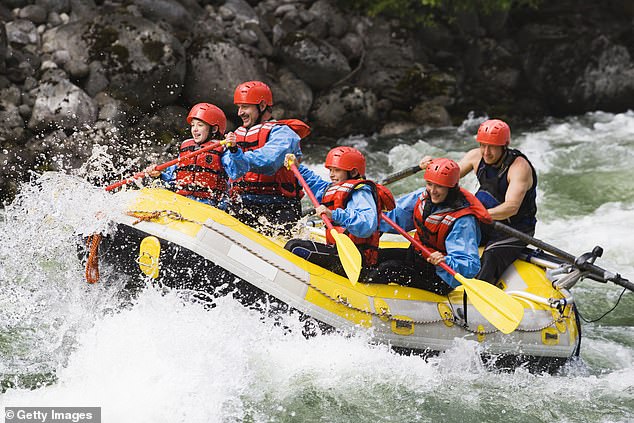
Water is highly unpredictable and while white water rafting is generally fairly safe, there will always be some risk in a natural setting that you can’t control
‘This is one of those sports where things can happen even if all the conditions are perfect, just because water is such a powerful thing.
‘If you get trapped in the wrong way, moving water is incredibly dangerous.
‘Unlike quad biking where you can mitigate the risk a lot yourself by being sensible, with this sport some of the risk in inherent to the moving water, which you can’t fully get rid of’.
SCUBA DIVING
DANGER RATING: 3/10
Micro mort ranking: 1,150 miles
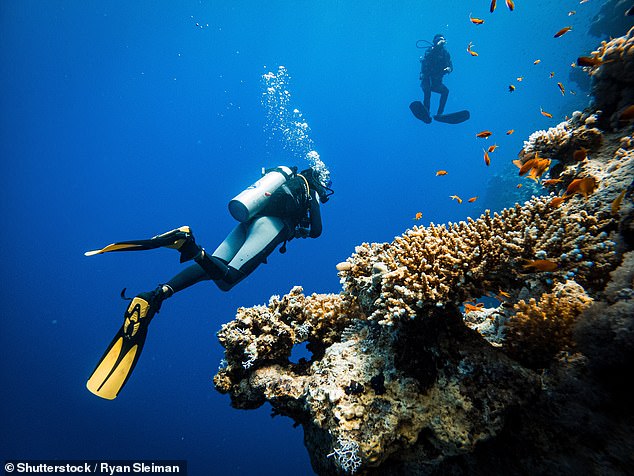
Unless you’re highly experienced, stick to 10 metres in depth and your risk factor will plummet
‘Again, if you do it in good conditions, it’s much less risky.
‘Don’t go too deep. The major issue on scuba diving is the depth of the dive. If you’re not going deep, most of the time it’s fine, it’s a much lower risk activity.
‘The deeper you go, exponentially the risk increases. If you’re at 10 metres’ depth, looking at coral – that’s absolutely fine. If a piece of equipment malfunctions, you can probably make it to the surface.
‘Anything deeper, or in poor lighting conditions is riskier; it’s easy to get confused on where is up and where is down if you can’t see clearly.’
BUNGEE JUMPING
DANGER RATING: 2/10
Micro mort ranking: 230 miles
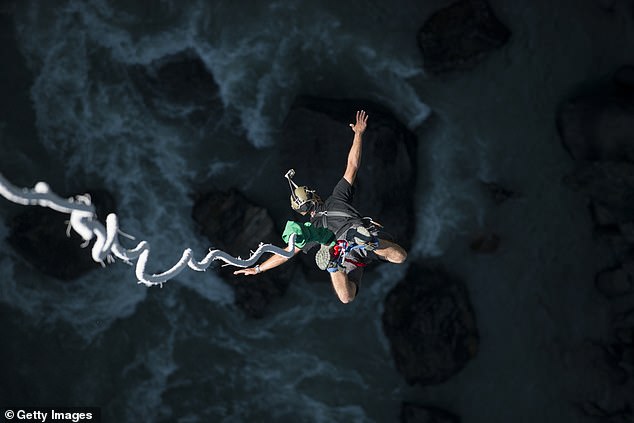
Hard to believe but, if you don’t mind heights, you’re likely in safe hands with a bungee jump
Rob says that, personally, he ‘would never do bungee jumping’ but only because of his fear of heights, not because it’s not safe.
Probably because it looks so dangerous, it’s actually become very safe, he reassures.
‘If something is very dangerous, the safety goes up so much that it actually becomes quite a safe activity.
‘For example, driving cars before seatbelts and airbags were invented was crazy dangerous. Even a crash at 30mph used to kill you if you didn’t have a seatbelt.
‘With bungee jumping, you’re strapped into a harness before you get anywhere close to the edge and someone’s looking after you one on one. It’s much, much safer than you might think’.
SKIING
DANGER RATING: 2/10
Micro mort ranking: 173 miles
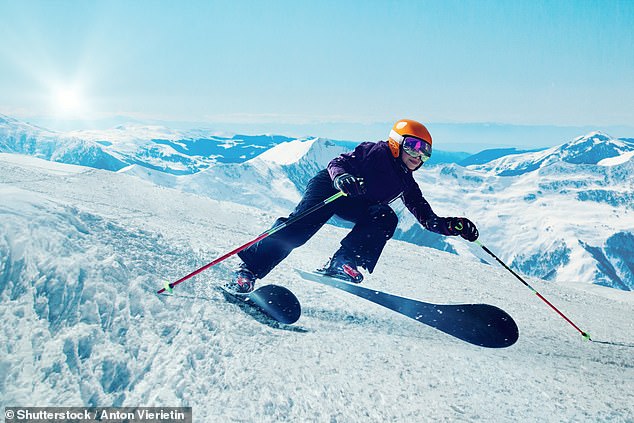
Skiing without a helmet doubles your risk of death or serious injury – and staying on piste is a wise idea, too
This one’s simple, says Rob: ‘Basically, wear a helmet – it doubles the safety.
‘The chances of serious injury are halved if you wear a helmet. It’s crazy not to wear one on a ski slope.’
No surprise that those winter sports fans who want to go off piste also ramp up the risk factor: ‘On piste, you’re much less likely to have an accident.’
Conditions too have a big impact on safety: ‘If there’s not great visibility or a snow storm descends, these are the things that can cause accidents, so trust your instincts’.
HOT AIR BALLOONING
DANGER RATING: 1/10
Micro mort ranking: 173 miles
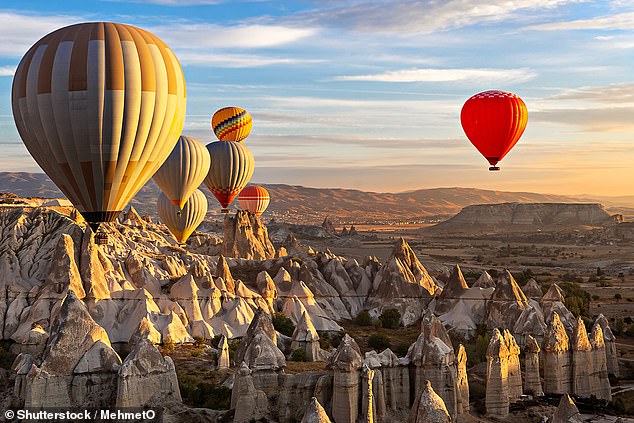
Recent accidents in Turkey and Southern Brazil are likely to worry tourists, but generally hot air ballooning is a ‘very safe’ activity
While it might seem that hot air ballooning accidents are in the news regularly, when you consider how many balloon flights there are, it’s still a relatively safe pursuit.
‘If the weather’s good and the company you’ve chosen look like they have their things in order, it’s a fairly safe activity.’
Often a lack of knowledge can put people off trying something, he adds.
‘I know if I see even a fatal car accident, I don’t stop driving because I think it is suddenly more dangerous. That’s because I, rightly or wrongly, believe I understand how risky car driving is.
‘But if I know nothing about an activity, I am way more influenced by events – say a shark biting someone (still very rare) or in the recent hot air balloon accidents in Brazil and Turkey. But, it’s still a very safe activity.’
SUBMERSIBLE TOURS
DANGER RATING: 1/10
Micro mort ranking: 115 miles
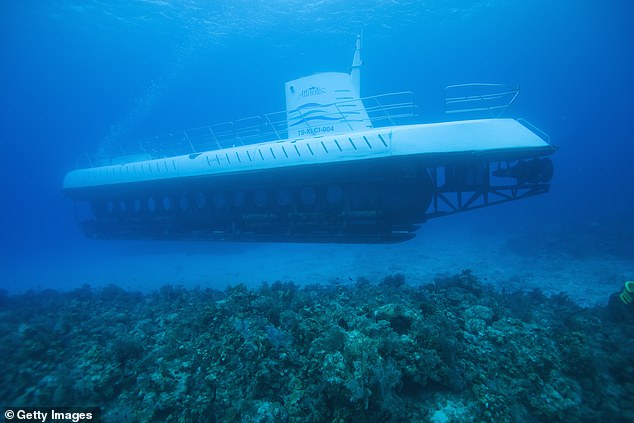
The demise of the Titan sub at the bottom of the Atlantic ocean in June 2023 shouldn’t influence tourists on the subject of sightseeing submersibles – they’ve very different beasts, says Rob
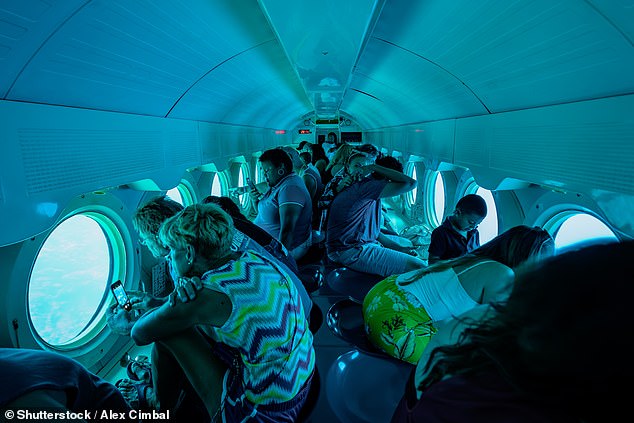
A trip under the sea on holiday is actually a pretty safe pursuit, so just enjoy the view
Banish those thoughts of the doomed Titan aside, the submersibles that are used for underwater sightseeing tours are a completely different beast, says our expert.
‘Another one I would never do! But commercial operators are normally so safe; it’s so strongly regulated. The vessels can usually go at least twice as deep as they do.
‘This is one that you should really just enjoy it…’.
HIKING
DANGER RATING: 1/10
Micro mort ranking: 115 miles
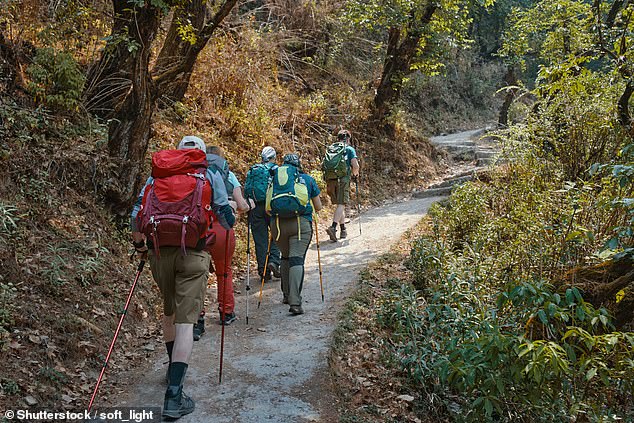
The dangers of strenuous walking are underestimated, with over 1,100 hiking-related incidents every year in Germany alone
‘When it comes to risk, this is almost the opposite of driving a car.
‘The car has become safer and safer, with the risks of accident going down and down.
‘Hiking feels incredibly harmless and 99 per cent of trips are safe.
‘However, it’s when you overestimate your skills, and you haven’t got great conditions, perhaps you’re running late and you’re hurrying or there’s been a small landslide in the area that you’re not aware of.’
To put the risk into perspective, in Germany alone, there are over 1,100 hiking-related incidents every year.
‘It’s generally one of those that because it’s perceived to be safe, people tend to do more risky things than you would if you knew it was a dangerous activity.
‘Most of hiking accidents are very, very avoidable but because it feels so safe and a lot of people do so much of it, people start taking more risks.
FUN FAIRS
DANGER RATING: 1/10
Micro mort ranking: 23 miles
‘The statistics we have say it’s very safe, like riding 23 miles in a car – it’s very, very safe.
‘With young children, you put them on some of the rides and you might worry but, across most of Europe, amusement parks are pretty well regulated and if things get too bad, someone will usually intervene.’
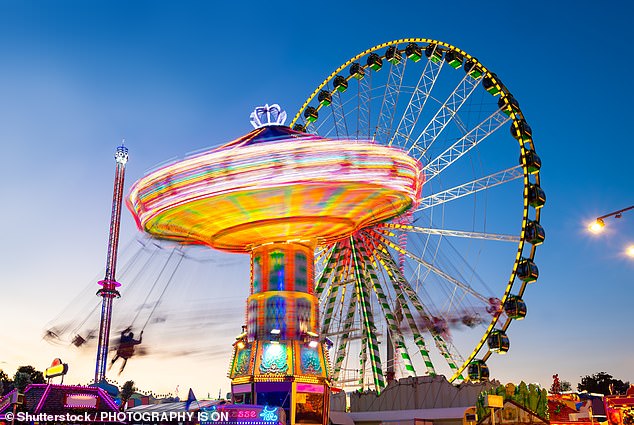
They may not always appeal to parents when they arrive on the local village green but fun fairs are usually pretty safe, says our expert
‘With a lot of rides, something not bad happens before something bad happens, so a minor incident will often flag a malfunction that prevents a major incident happening.
‘It’s very, very rare that rides have been built in a way that a death could occur.
‘I’m not saying it never happens, but generally funfairs and amusement parks are pretty safe.’
SUSPENDED GLASS BRIDGE WALK
DANGER RATING: -1/10
Micro mort ranking: 2.3 miles
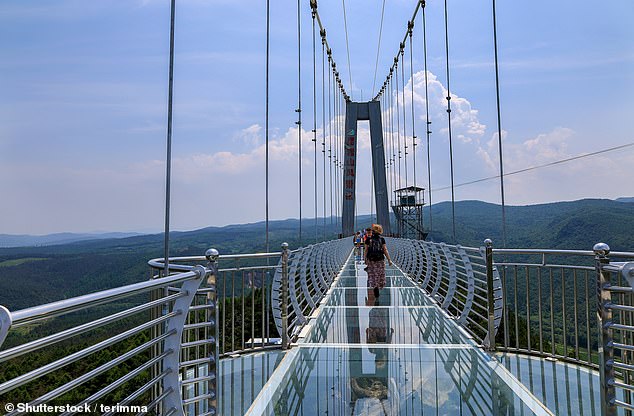
‘You could live on a bridge, they’re so safe’, says the Feather insurance co-founder even if the feeling of looking at the floor from high up can be stomach-flipping
In short, glass floors and bridges look nerve-shredding but are a low risk pursuit at the opposite end of the spectrum to cave diving.
Again, our expert’s phobia of heights would count him out but he’d encourage anyone that doesn’t have a fear to safely step forth.
‘This is almost as risky as just being alive. You’re almost as likely to not wake up from a sleep as you are to die because of a bridge falling down.
‘It’d be an absolute freak accident. On all of the things on this list, it’s at least 10 times safer than fun fairs and 10,000 times safer than cave diving.
You can go on bridges all day long, you could live on a bridge… you couldn’t live in a cave under water.’












